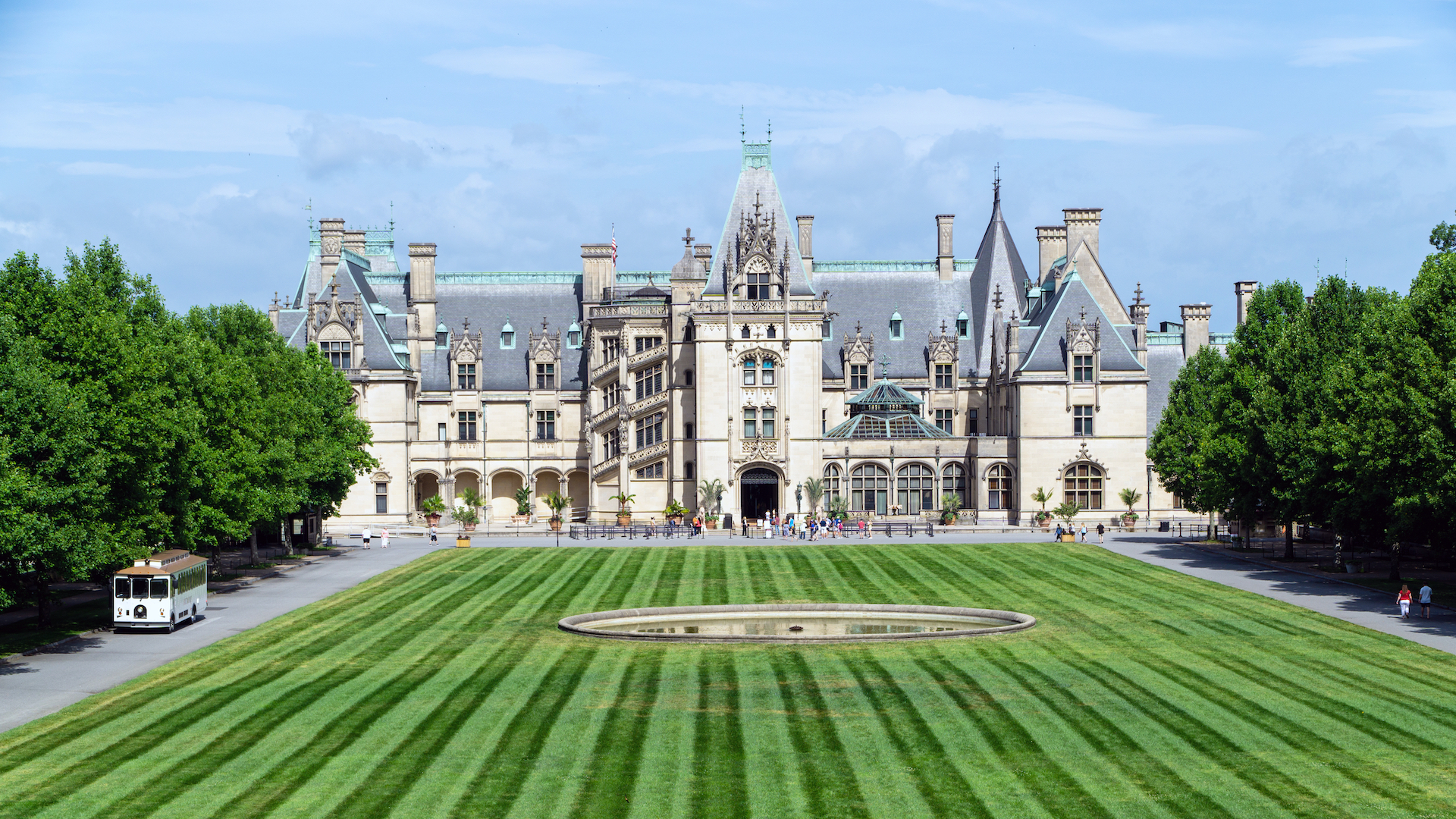
Situated in North Carolina, the Biltmore estate stands as the biggest privately-owned residence in the U.S., boasting more than 250 rooms. Delve deeper for an up-close exploration of this distinctive structure!
A symbol of refinement, the Biltmore Estate Is an exceptional dwelling that still enthralls tourists globally. Constructed upon the request of George Washington Vanderbilt III, this magnificent structure merges European aesthetics with American artistry. Let us explore jointly the legacy of this legendary site.
Interested in discovering the United States? These articles will assist you in finding your upcoming adventure:
- This tiny island, located merely two hours away from Boston, boasts some of the most stunning beaches in the entire United States.
- This erstwhile capital of Florida boasts the distinction of being the oldest city in the United States.
- 4 Museums Set to Reopen in New York City in 2025
A breathtaking architectural masterpiece nestled in the core of the Appalachians.
Located in Asheville, in North Carolina Biltmore stands out as a remarkable piece of architecture. This sprawling mansion boasts 250 rooms, including 35 bedrooms and 43 bathrooms, along with 65 fireplaces. It remains the biggest privately-owned house in America, encompassing over 16,000 square meters. The extensive property covers more than 3,000 acres and includes beautiful gardens, a winery, lodging facilities, an equestrian center, plus various stores and eateries.
This treasure can be attributed to art connoisseur George Washington Vanderbilt III, who hails from an influential clan that amassed their wealth through railways and maritime transportation.
A U.S. masterwork influenced by continental architectural styles
Following a two-month exploration of England and France in 1889, George Washington Vanderbilt III chose to commission the design of the Biltmore Estate to the renowned American architect Richard Morris Hunt. Having honed his skills at the prestigious École des Beaux-Arts in Paris, Hunt found creative inspiration in the French Renaissance chateaus, with particular admiration for the recently refurbished Château Royal de Blois—a quintessential representation of the era's majestic architecture.
The massive undertaking commenced several months afterward and kept as many as 1,000 laborers occupied for almost six years. In search of expertise for the gardens, George Washington Vanderbilt III sought out distinguished American landscape designer Frederick Law Olmsted, who was well-known for crafting the spaces at Central Park in New York City.
A legendary film location
Beyond serving as an architectural marvel, the Biltmore Estate has made significant appearances in film. The opulent backdrop caught the eye of numerous directors, resulting in iconic movies being shot here. Back in 1956, this grand location played host to the production crew for a notable film. The Swan In 1956, featuring Grace Kelly. It was also used as a setting for The Final Mohican (1992) with Daniel Day-Lewis, Forrest Gump (1993) with Tom Hanks , and Hannibal (2001) with Anthony Hopkins.
A location accessible to everyone since the year 20 th century
Back in 1930, the Vanderbilt family made their Biltmore estate accessible to the general public to safeguard this remarkable legacy. Nowadays, it stands out as one of the top attractions in North Carolina. Guests have the opportunity to wander through lavish rooms filled with art pieces and precious literature, alongside marveling at an elaborate helical stairway.
The impressive property also provides an extensive array of activities. These include concerts, exhibits, exploring over 92,000 artworks, and wine tasting—sourced naturally from its very own vineyards.

No comments:
Post a Comment